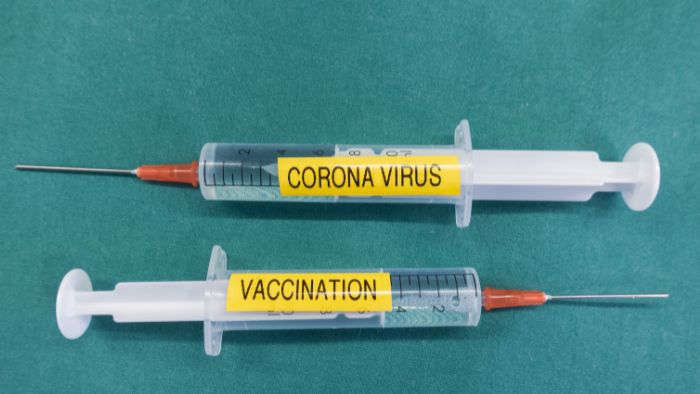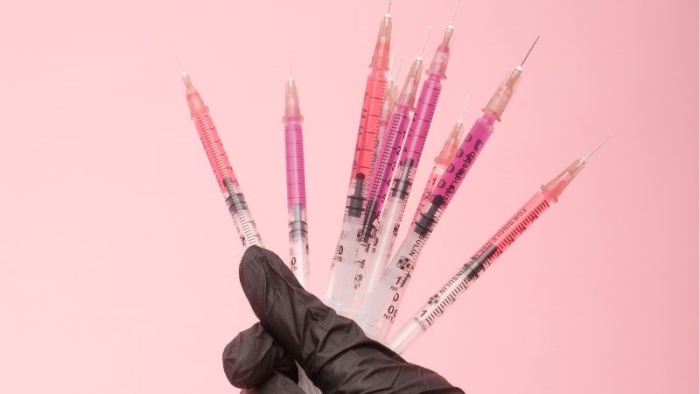In the pharmaceutical industry, syringe labels are very important. They help keep medication safe and effective.
These labels show key details like the drug name, dosage, and expiration date. This helps doctors and nurses avoid mistakes with medicine.
This guide talks about how to make good labels. It explains how to design labels well and follow rules. It also covers how to manage labeling operations.

Types of syringe labels
Prefilled syringe labels
These labels are used on syringes that come with medicine already inside. The syringes are easy to use and save time, but they are more expensive to make.

Standard syringe labels
These labels are put on syringes that need to be filled with medicine before use. The syringes are cheaper, but filling the syringe takes more time.

Insulin pen labels
These labels go on pens that hold insulin for people with diabetes. The syringes are easy to carry and use, but they cost more than regular syringes.

Drug syringe label design essentials
The design of syringe labels is very important. Clear labels help prevent mistakes.
First, the label should include the drug’s name and strength. Showing both generic and brand names reduces confusion.
Second, the label must show dosage. It should tell the amount of medicine and the solution’s volume.
Next, batch numbers and expiry dates are important. They help manage stock and avoid expired medicine.
Color coding is also useful. Colors can show the drug type or concentration. This helps healthcare workers pick the right syringe quickly.
Personalized color-coded labels can be made for patients. These help doctors quickly see a patient’s status. Color-coded labels are very helpful in busy medical settings.

Regulatory requirements and standards
Pharmaceutical suppliers follow many global and regional regulations. These rules help make sure medicines are labeled correctly.
| Guideline | FDA Guidelines (United States) | EMA Guidelines (Europe) | GMP Standards (International) |
| Drug Name and Strength | Required | Required | Not explicitly mentioned, but implied |
| Dosage and Instructions | Required | Required | Not explicitly mentioned, but implied |
| Warnings and Side Effects | Required | Required | Not explicitly mentioned, but implied |
| Expiration Date and Batch Number | Required | Required | Not explicitly mentioned, but implied |
| Storage Instructions | Required | Required | Not explicitly mentioned, but implied |
| Special Instructions (e.g., for children or adults) | Required | Required | Not explicitly mentioned, but implied |
| Accuracy and Completeness | Not explicitly mentioned | Not explicitly mentioned | Required |
| Information Match | Required | Not explicitly mentioned | Required |
| Printing Quality | Not explicitly mentioned | Not explicitly mentioned | Required |
| Readability and Understandability | Not explicitly mentioned | Not explicitly mentioned | Required |
| Adherence to Packaging | Not explicitly mentioned | Not explicitly mentioned | Required |
| Durability | Not explicitly mentioned | Not explicitly mentioned | Required |
Operational management of labels
Inventory management
Store and handle labels carefully to avoid damage. Labels help identify filled syringes and reduce mistakes. They make it easier for staff to prepare syringes for treatments and vaccines. This improves work speed.
Data management
Use electronic health record systems to manage label details. These systems help track information quickly and keep records up to date.
Emergency protocols
Set clear steps for using syringes fast in emergencies. These steps help healthcare workers find and use syringes quickly when needed.

Challenges and future directions
Multilingual labels
As markets grow, labels need many languages. This can make designing labels harder and risk confusing people.
Technological integration
Future labels may use AI to improve accuracy. This helps make labels more useful and reliable.
Quantity pricing options
Clinics can save money by buying more labels at once. This helps keep a good labeling system without spending too much.

Conclusion
Syringe labels are not just a regulatory requirement; they are a crucial component of patient safety and healthcare efficacy.
For pharmaceutical suppliers, choosing the right syringe labeling machine is very important and plays a key role in syringe labeling compliance.
Viallabeller has the right labeling machine to meet your needs, not only for syringe labeling but also for other pharmaceutical packaging types (tubes, ampoules, vials, etc.) to meet drug labeling standards.







